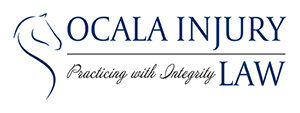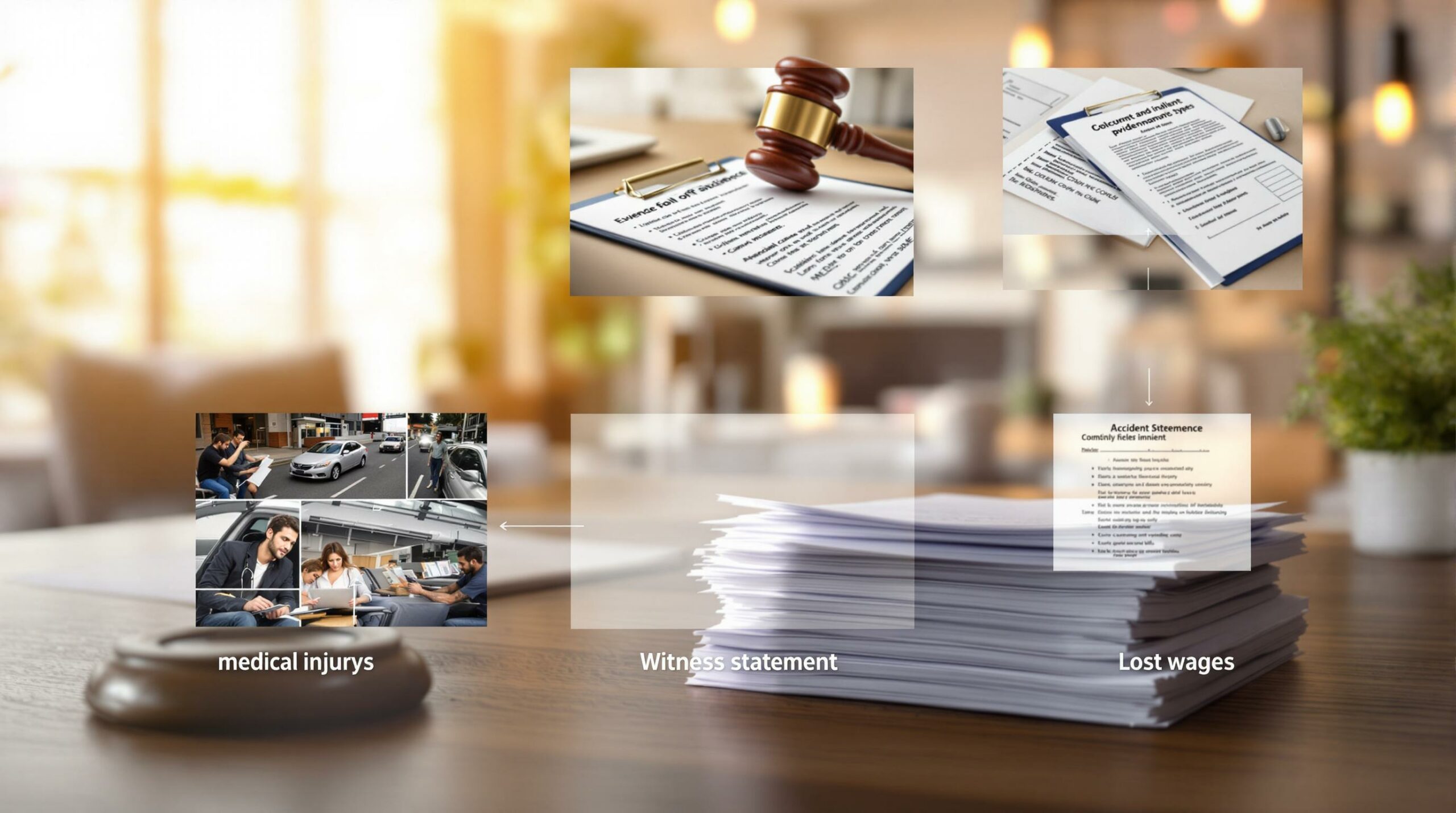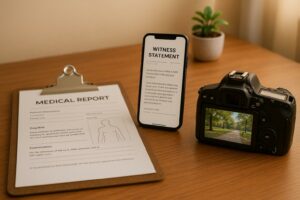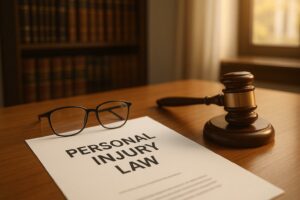Filing a personal injury claim? Strong evidence is key to proving fault and showing the impact of your injuries. Here are the 8 types of evidence you need to gather:
- Medical Records: Proof of injuries, treatments, and costs.
- Photos & Videos: Document injuries, accident scenes, and property damage.
- Eyewitness Statements: Third-party accounts of what happened.
- Official Reports: Police or accident reports with unbiased details.
- Physical Evidence: Damaged items or vehicles showing the accident’s impact.
- Financial Records: Proof of lost wages, medical bills, and other expenses.
- Expert Testimony: Specialists explaining injuries, damages, or accident causes.
- Daily Logs: Journals tracking pain, recovery, and activity limitations.
Why does this matter? These pieces of evidence work together to build a strong case, helping you secure fair compensation.
Quick Tip: Start collecting evidence immediately after the accident. Organize everything carefully to avoid disputes later.
1. Medical Documentation
Medical records are the foundation of any personal injury claim. They provide solid proof of injuries, treatments, and related expenses while creating a clear timeline from the accident to recovery.
Out of the eight types of evidence, these records are the backbone of your claim.
Key Medical Records to Collect
- Initial Treatment Records: Documents like ER reports or physician exams from your first visit establish the direct connection between the accident and your injuries.
- Ongoing Treatment Records: Include reports from specialists, physical therapy sessions, medical imaging, prescriptions, and any adjustments to your treatment plan.
-
Financial Records: Billing statements and receipts detail your monetary losses. Be sure to track:
- Medical bills
- Prescription expenses
- Travel costs for medical visits
- Any out-of-pocket costs tied to your treatment
"Medical records can be the cornerstone of a successful personal injury claim. They provide a written account of the injuries you’ve sustained and can be instrumental in painting a clear picture of the impact on your life." – Greene Broillet & Wheeler
Tips for Effective Medical Documentation
- Request all medical reports as soon as possible.
- Ensure your healthcare providers clearly note that your injuries resulted from the accident.
- Keep all receipts and expense records organized.
- Document every follow-up appointment and any changes in your treatment.
Why Timing Is Critical
Acting quickly on documentation helps prevent disputes about whether your injuries are linked to the accident.
2. Visual Evidence
Visual evidence provides clear proof of injuries, property damage, and the conditions surrounding an accident.
Types of Visual Evidence to Collect
Injury Documentation
- Take photos of injuries right after the accident.
- Follow up with additional photos to document changes over time.
- Include both close-up shots and wider images to give context.
- Capture visible signs of harm, such as bruises, cuts, swelling, or other trauma.
Accident Scene Details
- Photograph the entire accident site from different angles.
- Show road conditions, traffic signals, and weather at the time.
- Include skid marks, debris, and other evidence of the crash.
- Document damage to vehicles, buildings, or other property involved.
"Each photo must be true and accurate for court use."
Tips for Effective Visual Documentation
Timing and Accuracy
- Take photos as soon as possible after the incident.
- Use your device’s timestamp feature to verify when the photos were taken.
- Make backup copies for analysis, keeping the original files untouched.
Scene-Specific Advice
- Return to the scene at the same time and day to capture similar lighting and traffic conditions.
- Use objects like a ruler or coin for scale when photographing damage.
- Record weather and visibility details.
- Look for and note any surveillance cameras that might have captured the incident.
Protecting the Integrity of Your Evidence
To ensure your visual evidence holds up in court:
- Keep original files intact and create separate copies for review.
- Track who handles the evidence and when to maintain a clear chain of custody.
- Limit access to the files by saving them as "read-only" and restricting them to necessary parties.
Visual evidence can challenge insurance companies’ efforts to downplay injuries or deny liability. Paired with medical records and personal accounts, it paints a detailed picture of the accident’s impact on your life.
3. Eyewitness Accounts
Eyewitness accounts add a personal perspective that can help validate your claim. These testimonies provide an objective view of key details surrounding the incident, strengthening your case.
Why Witness Statements Matter
Eyewitnesses can help:
- Clarify who was at fault
- Establish the order of events
- Document immediate injuries and reactions
- Offer an unbiased, third-party perspective
"Eyewitnesses’ testimony serves as valuable evidence that clarifies who caused an accident, what actually caused the accident, and important details of the incident." – Turner, Onderdonk, Kimbrough & Howell
To make the most of eyewitness accounts, it’s crucial to gather and document their statements effectively.
How to Collect Reliable Witness Statements
Act Quickly
- Get full names, contact information, and detailed accounts as soon as possible.
- Use video or voice recordings to capture their statements.
- Note specifics about their vantage point and viewing conditions.
- Record any distractions or limitations they might have noticed.
Keep It Organized
- Have witnesses sign and date their statements.
- Time-stamp all observations.
- Keep backup copies of every statement.
- Document any follow-up discussions.
Evaluating Witness Credibility
When assessing the reliability of a witness, focus on these factors:
| Factor | What to Consider |
|---|---|
| Observation Quality | Distance from the incident, lighting, and duration |
| Physical Capability | Vision, hearing, or other sensory abilities |
| Attention Level | Distractions or focus during the incident |
| Consistency | Agreement with other evidence and witness accounts |
Reliable witness accounts can significantly enhance your case when paired with other evidence, like photos or medical records.
Seeking Professional Guidance
Legal professionals can assist with:
- Identifying potential biases in witnesses
- Preparing witnesses to provide clear, consistent statements
- Integrating witness testimony with other types of evidence
"The credibility and reliability of witnesses are critical factors that directly impact the persuasiveness and strength of their testimony." – Fletcher Law Office, LLC
Eyewitness testimonies are most impactful when they align with other evidence, such as photos, videos, or official reports. These accounts add depth to technical evidence, creating a stronger, more relatable narrative for your claim.
4. Official Reports
Official reports, like police and accident reports, provide objective documentation that can strengthen your claim. These documents are highly regarded by both insurers and courts due to their impartial nature.
What Makes an Effective Official Report?
An effective official report should include the following details:
- Exact date, time, and location of the incident
- Contact information for all parties involved
- Weather and road conditions at the time
- Descriptions of vehicle damage
- Witness statements and their contact details
- The officer’s professional assessment
- Insurance details for everyone involved
"Insurance adjusters and attorneys often give a lot of weight to what’s in the police report, especially if the officer’s findings indicate that one driver bears most (or all) of the fault for the car accident." – Allister R. Liao, Attorney
How to Obtain and Review Reports
In Florida, crash reports are usually available within 10 days of the incident. Here’s how you can get them:
| Action | Details | Cost |
|---|---|---|
| Initial Request | Contact the responding law enforcement agency | No charge |
| Standard Copy | Available through the Florida Crash Portal | $10.00 per report |
| Online Convenience Fee | Additional processing charge | $2.00 |
| Multiple Reports (10 or more) | Submit a request letter to the FLHSMV | $10.00 each |
It’s important to review your report as soon as possible to address any errors or inconsistencies early.
How to Check for Accuracy
When reviewing your report, pay close attention to these key points:
-
Basic Information
- Names and contact details
- Vehicle descriptions
- Insurance information
- Specifics about the location
-
Factual Details
- Sequence of events
- Road and weather conditions
- Witness accounts
- Determination of the cause
- Indication of fault
- Any contributing factors
If you notice any errors, reach out to your local police department to request corrections.
Confidentiality Rules
In Florida, traffic crash reports are kept confidential for 60 days following the incident. During this time, only involved parties, their attorneys, insurance companies, law enforcement, prosecutors, and media outlets can access them. After the 60-day period, these reports become public records.
sbb-itb-68ed374
5. Physical Items
While visual and testimonial evidence help illustrate events, physical items provide concrete proof that strengthens your claim. These items can demonstrate both the cause of an accident and the extent of the resulting damage.
Types of Physical Evidence
Here are some physical items that can support injury claims:
- Damaged Vehicles: A vehicle left in its post-accident condition can reveal the force of impact and collision points.
- Personal Items: Broken electronics, damaged accessories, or shattered belongings highlight the severity of an accident.
- Safety Equipment: Items like helmets or other protective gear that show damage can indicate the intensity of the impact.
- Clothing: Torn or bloodstained clothing may provide clues about injuries and the circumstances of the accident.
- Defective Products: Faulty equipment or tools responsible for injuries can serve as key evidence.
Proper Evidence Preservation
To ensure physical evidence remains useful, follow these steps:
| Action | Purpose | Timeline |
|---|---|---|
| Photograph Items | Capture their original condition | Immediately after incident |
| Secure Storage | Prevent tampering or damage | Within 24 hours |
| Professional Inspection | Get expert evaluation | Within the first week |
| Chain of Custody | Maintain integrity | Throughout the case |
Documentation Requirements
- Item Details: Record the condition of each item, noting measurements, visible damage, and any identifying marks or serial numbers. Take detailed photos from multiple angles.
- Location Information: Document where the items were found, their positioning, and their connection to the accident scene. If possible, include GPS coordinates.
Physical evidence works alongside visual and testimonial records to create a stronger case.
"Physical evidence can provide undeniable proof of how an accident occurred and the extent of the damage. Unlike witness statements or opinions, tangible objects speak for themselves."
– Dell & Dean
Common Physical Evidence Examples
Some examples of physical evidence include:
- Fallen tree limbs causing property damage
- Iced-over sidewalks leading to slip-and-fall injuries
- Potholes that damage vehicles or cause accidents
- Malfunctioning appliances that result in injuries
Expert Analysis
Experts can analyze physical items to uncover details like impact force, collision direction, product defects, or maintenance issues. Their findings can highlight safety violations and further validate the effects of the accident, supporting your claim even more effectively.
6. Income and Loss Records
Financial records are crucial for showing economic losses, covering both immediate and long-term effects.
Types of Financial Documentation
Key documents include:
- Pay Records: Recent pay stubs, W-2 forms, and wage verification documents.
- Tax Returns: Previous year’s filings to highlight income trends.
- Business Records: Billing statements, invoices, and schedules for those who are self-employed.
Calculating Lost Wages
| Income Type | Documentation | Purpose |
|---|---|---|
| Regular Pay | Pay stubs, W-2s | Establish baseline income |
| Overtime | Pay records | Reflect extra hours |
| Bonuses/Commissions | Performance records | Show additional earnings |
| Self-Employment | Tax returns, business files | Calculate average income |
Self-Employed Documentation
If you’re self-employed, you’ll need to show income loss using detailed records. This could include billing statements, canceled appointments, and impact statements. Supplement these with invoices, payment receipts, client correspondence, or evidence of project delays to demonstrate the financial setback.
"A key aspect of any personal injury claim is calculation of all losses arising from the accident and resulting injuries." – AllLaw.com
Future Income Impact
Long-term earning limitations should also be documented. Key items to include:
- Medical Assessments: Reports showing work restrictions due to injury.
- Vocational Evaluations: Expert analysis of how injuries affect job prospects.
- Rehabilitation Records: Updates on progress and any ongoing limitations.
Documentation Best Practices
Keep your records organized and secure. Digitize everything, categorize expenses by date, and obtain employer statements detailing missed opportunities or promotions.
"These damages compensate you for your financial losses after your injury. You can specifically calculate them using bills, pay stubs, and other documentation." – Allen Law Accident & Injury Lawyers
Economic Impact Summary
Track every expense tied to your injury, including:
- Medical bills
- Rehabilitation costs
- Property damage repairs
Clear and detailed financial records will help quantify your losses and make your case stronger. These records also lay the groundwork for expert evaluations covered in the next section.
7. Professional Opinions
Expert witnesses play a crucial role in strengthening injury claims by offering specialized knowledge that clarifies complex issues and assists in settlement negotiations.
Types of Expert Witnesses
| Expert Type | Role | Key Contributions |
|---|---|---|
| Medical Specialists | Assess injuries and treatment | Prognosis, care standards, long-term effects |
| Accident Reconstructionists | Analyze crash dynamics | Speed, impact angles, collision sequence |
| Economic Experts | Calculate financial impact | Future costs and lost earnings estimates |
| Engineering Specialists | Evaluate technical aspects | Product defects and safety standard evaluations |
| Forensic Experts | Examine physical evidence | Causation analysis and fault determination |
Impact on Case Strength
The experience and qualifications of these experts significantly influence trial outcomes. Their ability to present credible, detailed insights can make or break a case.
Real-World Success Examples
Expert opinions have been instrumental in achieving notable settlements:
- $30 million settlement: Economic experts calculated lifetime care costs for a traumatic brain injury victim.
- $1.95 million recovery: Mechanical and biomechanical engineers clarified complex principles in a low-impact collision case.
- $2.5 million settlement: An accident reconstruction expert demonstrated that a truck was moving at only 16 mph while merging, influencing the outcome of a truck accident case.
When to Involve Experts
It’s essential to bring in expert witnesses at the right time:
- Early on to preserve crucial evidence
- Before starting settlement discussions
- In cases where liability is contested
- For complex medical conditions
- When calculating long-term damages
Medical specialists, in particular, often play a central role in these cases.
Medical Expert Contributions
Medical experts provide critical support by:
- Defining care standards
- Explaining how injuries occurred
- Projecting future medical needs
- Assessing permanent impairments
- Connecting accidents directly to injuries
These expert insights, combined with financial documentation, help build a thorough case for both liability and damages.
8. Daily Records
Daily records go hand-in-hand with medical and visual evidence, showing how injuries impact your daily life. These journals help capture your recovery journey and keep track of details that might otherwise be forgotten over time.
Key Elements to Include in Daily Records
| Component | What to Record | Why It Matters |
|---|---|---|
| Pain Levels | Use a 1-10 scale, note location and type of pain | Highlights severity and patterns over time |
| Medical Care | Appointments, treatments, medications | Shows consistent efforts to seek treatment |
| Activity Limits | Work restrictions, struggles with daily tasks | Reflects changes in your day-to-day capabilities |
| Emotional State | Mental health impacts, stress levels | Captures non-physical effects of your injuries |
| Expenses | Medical bills, related costs | Tracks the financial burden of your recovery |
Tips for Effective Documentation
- Write entries as soon as possible after events.
- Use clear, factual descriptions, noting exact dates, times, and durations.
- Include both physical symptoms and emotional challenges.
Example Pain Log Entry
"2/2/2014, 8 p.m.: Pain level 7/10; took oxycodone but experienced no relief; unable to complete basic tasks due to intense pain."
Professional Tips for Record-Keeping
- Stick to objective language – avoid emotional outbursts.
- Always include dates and times for every entry.
- Record conversations with medical professionals.
- Add witness names and contact details when relevant.
- Track all prescribed treatments and note any changes in effectiveness.
Why These Records Matter
Detailed daily records:
- Capture important details that might otherwise be forgotten.
- Offer measurable evidence of ongoing challenges.
- Show progress or setbacks during recovery.
- Enhance medical evidence with personal accounts.
- Help identify patterns in symptoms and limitations.
"If you can keep detailed notes about your injuries, you will help your attorney get the best results for you."
How Often Should You Update?
Make entries multiple times a day when symptoms occur, and update after medical appointments. Consistent, thorough documentation strengthens your claim when paired with other evidence.
Next Steps
Building a strong personal injury claim starts with gathering and organizing reliable evidence. Expert assistance can help you stay on track.
How to Maximize Your Evidence Collection
Use this timeline to ensure you capture all critical evidence:
| Timeline | Action Items | Purpose |
|---|---|---|
| Immediately After Incident | Take photos of the scene and injuries, collect witness details | Preserve evidence that may fade over time |
| First Week | Request police reports and medical records | Create an official record |
| Ongoing | Keep a daily journal and save all receipts | Document recovery and expenses |
Once your evidence is in order, it’s time to prepare for your case evaluation.
Preparing for Your Case Evaluation
Have these items ready for your consultation:
-
Medical Documentation
- Doctor’s notes and surgical reports
- Imaging results like MRIs or X-rays
- Prescription records
- Photos of injuries
- A list of appointment dates
-
Financial Records
- Medical bills and receipts
- Proof of lost wages or employment impact
- Insurance communications
- Receipts for any injury-related purchases
Why Work with Professionals?
Legal professionals can provide key support by:
- Offering access to resources that strengthen your claim
- Helping you document evidence correctly
- Securing hard-to-get records
- Organizing your evidence effectively
- Strategizing how to present your case
Acting quickly and seeking professional guidance can help protect the integrity of your evidence. A free case evaluation can also clarify which pieces of evidence are most important for your claim. Early advice often makes a big difference in building a strong case.




